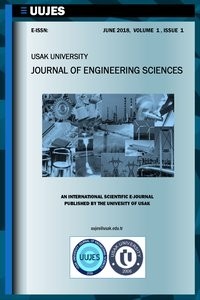THE PHYLOGENETIC RELATIONSHIPS OF LIPASE ENZYMES ACCORDING TO THEIR THERMAL STABILITY BY A COMPUTATIONAL APPROACH
THE PHYLOGENETIC RELATIONSHIPS OF LIPASE ENZYMES ACCORDING TO THEIR THERMAL STABILITY BY A COMPUTATIONAL APPROACH
Molecular Phylogenetic Analysis studies conducted to reveal the evolutionary relationships of biological sequences, use two basic methodologies. In the study of distance-based methodologies, phylogenetic trees were obtained by clustering Lipase enzymes according to their thermal stability. The biological sequences to be used in the study were obtained from the NCBI Genbank database. Methods were coded in the Java programming language and distance matrices were obtained. Phylogenetic trees were constructed using the R language. As a result, Lipase enzymes were effectively clustered using a distance-based method without alignment, according to their thermal stability.
___
- 1. Lesk AM. Introduction to bioinformatics. 2nd edition. New York: Oxford University Press; 2005.
- 2. Nasibov E and Kandemir-Cavas C. OWA-based linkage method in hierarchical clustering: Application on phylogenetic trees. Expert Sys. Appl., 2011;38:12684-12690.
- 3. NCBI Resource Coordinators. Database resources of the national center for biotechnology information. Nucleic Acids Research, 2016;4(44 Database issue):D7-D19.
- 4. Apostolico A, Guerra C, Landau GM, and Pizzi C. Sequence similarity measures based on bounded hamming distance. Theor. Comput. Sci., 2016;638:76-90.
- 5. Mount DM. Bioinformatics: Sequence and Genome Analysis. 2nd edition. New York: Cold Spring Harbor Laboratory Press; 2004.
- 6. Ng PC and Henikoff S. Predicting deleterious amino acid substitutions, Genome Res., 2001;11(5):863-74.
- 7. Albayrak A and Sezerman OU. Lempel-Ziv Complexity scores for clustering mesophilic and thermophilic Lipases. The International Enzyme Engineering Symposium 2008, 2008, Kuşadası, Aydın.
- 8. Krane DE and Raymer ML. Fundamental concepts of bioinformatics. San Francisco, USA: Pearson Education; 2008.
- 9. Clustal Omega [Document on the Internet]. 2017 [cited 2017 April]. Available from: http://www.ebi.ac.uk/Tools/msa/clustalo/
- 10. Amiri S and Dinov D. Comparison of genomic data via statistical distribution. J. Theor. Biol., 2016;407:318-327.
- 11. Mitra S and Acharya T. Data mining: multimedia, soft computing and bioinformatics. NJ: Wiley; 2003.
- 12. Melsted P and Pritchard JK. Efficient counting of k-mers in DNA sequences using a bloom filter. BMC Bioinformatics, 2011;12:333.
- 13. Hashim EKM and Abdullah R. Rare k-mer DNA: Identification of sequence motifs and prediction of CpG island and promoter. J. Theor. Biol., 2015;387:88-100.
- 14. Fiannaca A, La Rosa M, Rizzo R, and Urso A. A k-mer-based barcode DNA classification methodology based on spectral representation and a neural gas network. Artif. Intell. Med., 2015;64:173-184.
- 15. Wen J, Chan RH, Yau SC, He RL, and Yau SS. K-mer natural vector and its application to the phylogenetic analysis of genetic sequences, Gene, 2014;546(1):25-34.
- 16. Al-Anzi FS and AbuZeina D. Toward an enhanced Arabic text classification using cosine similarity and Latent Semantic Indexing. Journal of King Saud University – Int. J. Comput. Inf. Sci., 2014;29:189-195.
- 17. Royter M, Schmidt M, Elend C, Höbenreich H, Schäfer T, Bornscheuer UT, and Antranikian G. Thermostable lipases from the extreme thermophilic anaerobic bacteria Thermoanaerobacter thermohydrosulfuricus SOL1 and Caldanaerobacter subterraneus subsp. Tengcongensis, Extremophiles, 2009;13:769–83.
- 18. Anaerobic Digestion-Mesophilic Vs. Thermophilic [Document on the Internet]. 2017 [Cited 2017 April]. Available from: https://www.theecoambassador.com/Anaerobic-Digestion-Temperature.html
- 19. Arpigny JL and Jaeger KE. Bacterial lipolytic enzymes: classification and properties, Biochem. J., 1999;343:177-183.
- 20. Weyenberg G and Yoshida R. Phylogenetic Tree Distances, Ref. Module Life Sci. Encyc. Evol. Biol., 2016;285-290.
- Başlangıç: 2018
- Yayıncı: Uşak Üniversitesi
